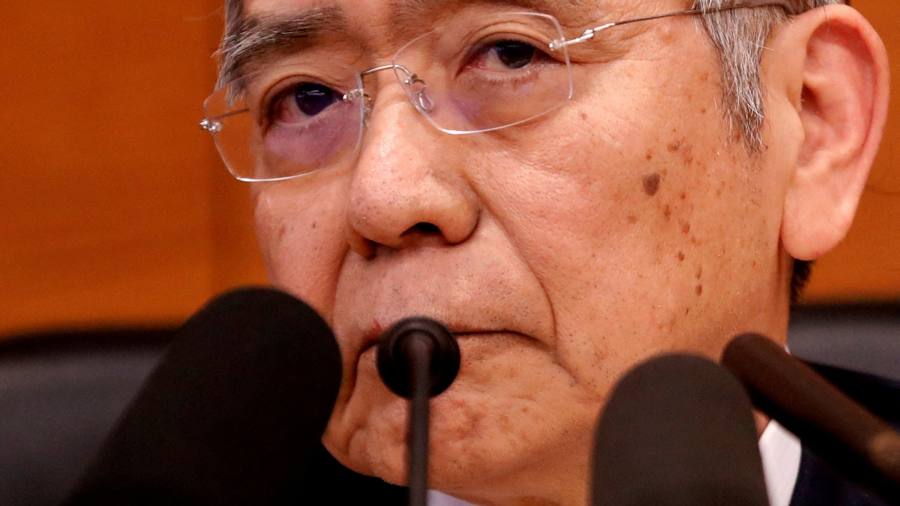The yen neared a seven-month high on Tuesday as traders in Tokyo warned of potentially extreme moves for the currency in the next 24 hours after the Bank of Japan started its most unpredictable policy meeting in a decade.
The run-up to the two-day meeting, which will be the penultimate under the BoJ’s longest serving governor, Haruhiko Kuroda, has prompted a wide range of forecasts for possible outcomes.
Since the BoJ stunned the markets in December by widening the targeted trading band for its yield curve control (YCC) policy, investors have sensed the prospect of a historic pivot by the last big central bank to defend an ultra-loose monetary regime.
“At this point in the week, any prediction of where the yen might close on Friday is an all-in bet on black or red,” said one trader. “If Kuroda blinks [and changes policy in response to market pressure], the yen rockets; if he does nothing, then it could dive.”
Expectations of a possible switch in policy have triggered a month-long surge in Japanese bank stocks, which stand to profit from rising interest rates and the end of the BoJ regime. Fixed income trading has meanwhile pushed the yield on the benchmark 10-year Japanese government bond to the top of the central bank’s target, producing ever greater pressure on Kuroda to abandon trying to control the yield curve.
The Japanese currency has risen steadily this year but it has not swung as far as currency analysts expected, suggesting to some that hedge funds and other investors outside Japan are preparing to build large positions in the yen after Wednesday’s announcement.
If, as some banks predict, the BoJ uses the meeting to loosen or abandon its policy of controlling yields on the benchmark 10-year Japanese government bonds, analysts said the yen could continue its surge towards ¥120/$. If the BoJ makes no change in policy, the yen could tumble back towards ¥140/$. It plunged to a 32-year low last summer.
Benjamin Shatil, a foreign exchange strategist at JPMorgan, said that, on paper, a decision by the BoJ to end yield curve control would imply a 4-5 per cent increase in the yen. But he added that in the circumstances markets would be liable to overshoot.
“At the moment, the long-yen position is not so crowded, and in contrast with last year the foreign funds are not stocked up on that bet. That means there is potentially a lot of money that can flow into the market, and we know that, whatever the BoJ decides, the market is very, very quick to start looking at the bank’s next move,” said Shatil.
Kenta Tadaide, a senior foreign exchange strategist at Daiwa Securities, said expectations among investors, particularly in the short-term Japanese government bond markets, had moved beyond what the BoJ was likely to do over the next 12 months.
Given that the current yen level may already reflect market expectations for YCC to be scrapped, he argued, the yen may not climb much higher if that turns out to be the outcome of this week’s meeting.
On the other hand there may be the risk of a depreciation if the bank’s new governor, who will take over in April, does not meet expectations by scrapping the YCC and abandoning negative interest rates.
“The yen could temporarily overshoot by about ¥5 [if the YCC is scrapped]. But we also need to be aware of the depreciation risk if the BoJ’s actions do not go far enough,” Tadaide said.
Read the full article here



